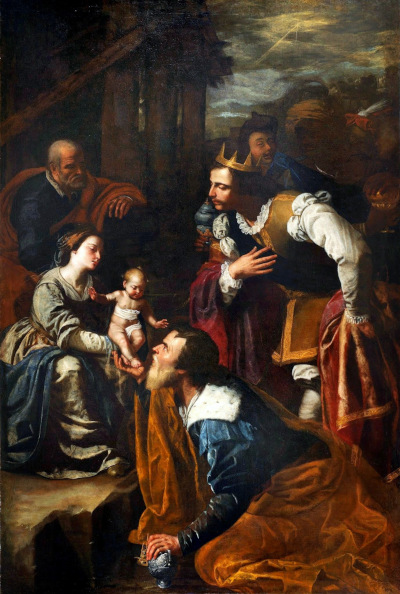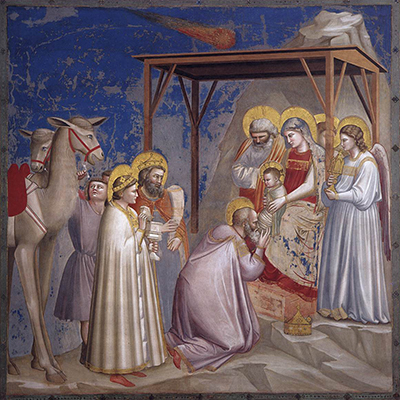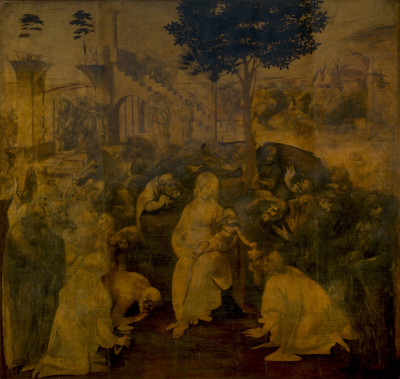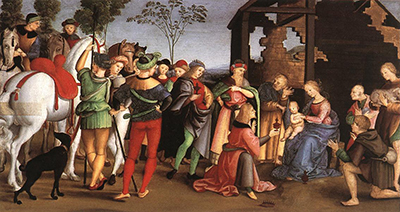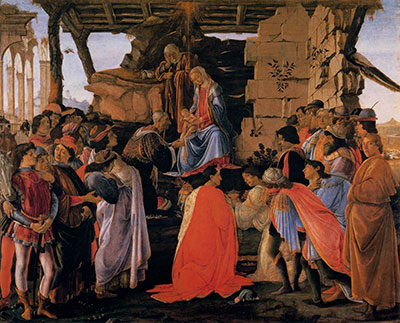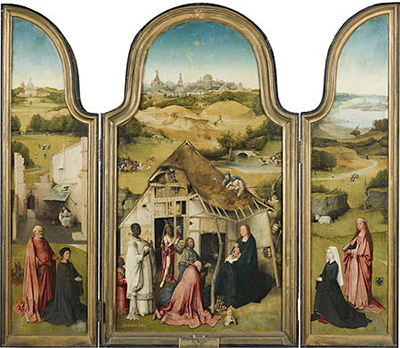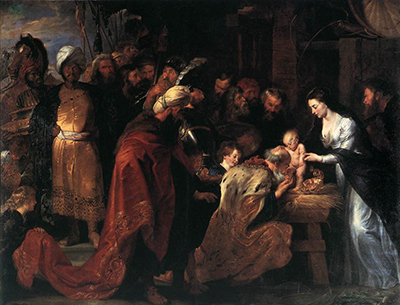Adoration of the Magi was part of a triple-commission awarded to Artemisia Gentileschi in the mid-1630s. The other two items were Saint Januarius in the Amphitheatre at Pozzuoli and Saints Proculus and Nicea.
Introduction
Adoration of the Magi is one of the most prevalent Christian themes found within the Italian Renaissance and Baroque eras. It was perhaps inevitable that Artemisia Gentileschi would cover it at some point in her career, though much depending on the needs of her donor. The cathedral of Pozzuoli are likely to have requested this content specifically.
Commission
In the early 1630s the cathedral of Pozzuoli was to be renovated. One of the many projects included new paintings to be displayed alongside the choir, and Artemisia Gentileschi was chosen to complete three paintings for this purpose. Several friends and other connections were close to those planning the overall work, and were able to suggest Artemisia as the preferred candidate.
Description
Artemisia's version of the Adoration of the Magi is filled with Baroque style, with a swirling sky and the dramatic presentation of the child to the Kings themselves. We find the star brightly twinkling in the distance. One of the Kings sports his crown, whilst another kneels in front of the child.
A third is just behind the young mother. The artist puts considerable detail into the clothing of these main figures, with folds of drapery with which she was so skilled in depicting. There are delicate frills, and plumed sleeves, as well as carefully selected colours including a strong use of blue, as well as red and mustard.
Figures are included further back, but deliberately blurred away in order to indicate the prominence of the main figures in front of us. Some trees or architecture is included along the left hand side, helping to set the scene, but these are also styled in a way that would not distract the viewer's initial glance at the painting.
Location
Artemisia Gentileschi's Adoration of the Magi resides today at the Pozzuoli Cathedral in Naples, Italy. It is one of the few artworks from her career to have been attributed to the artist throughout its lifetime, and to remain in its original, intended location.
Size and Medium
In accordance with their intended hanging location, all these paintings were completed in a large scale, to allow for some viewing them from a considerable distance. In the case of Adoration of the Magi, the painting measures 310 cm in height, by 206 cm in width, making it amongst her largest of all.
Famous Adoration of the Magi Paintings
The Adoration of the Magi is often known as the Adoration of the Kings and has been featured regularly within the Renaissance and Baroque periods, leading to a consistent reference to certain parts of the original story. We include some of the best contributions below and attempt to compare them with the version gifted to the Pozzuoli Cathedral by Artemisia Gentileschi, as part of her three-painting commission.
Giotto di Bondone, Leonardo da Vinci, Raphael and Diego Velazquez are just four of the famous names to have taken on this subject. Religious themes more generally were highly common during both the Renaissance and Baroque periods, and this was partly because of how the religious institutions held much of the wealth, and therefore opportunities for artists.
Large Image of Adoration of the Magi
See below to enjoy more of the detail added to this beautiful painting. There is no substitute for seeing an artwork in person, but hopefully the larger image below will offer you a clue as to the wonderful work completed by Artemisia Gentileschi all those years ago. Of particular interest may well be the touches of drapery, as well as the facial features, and these were two techniques in which Gentileschi was particularly highly regarded.
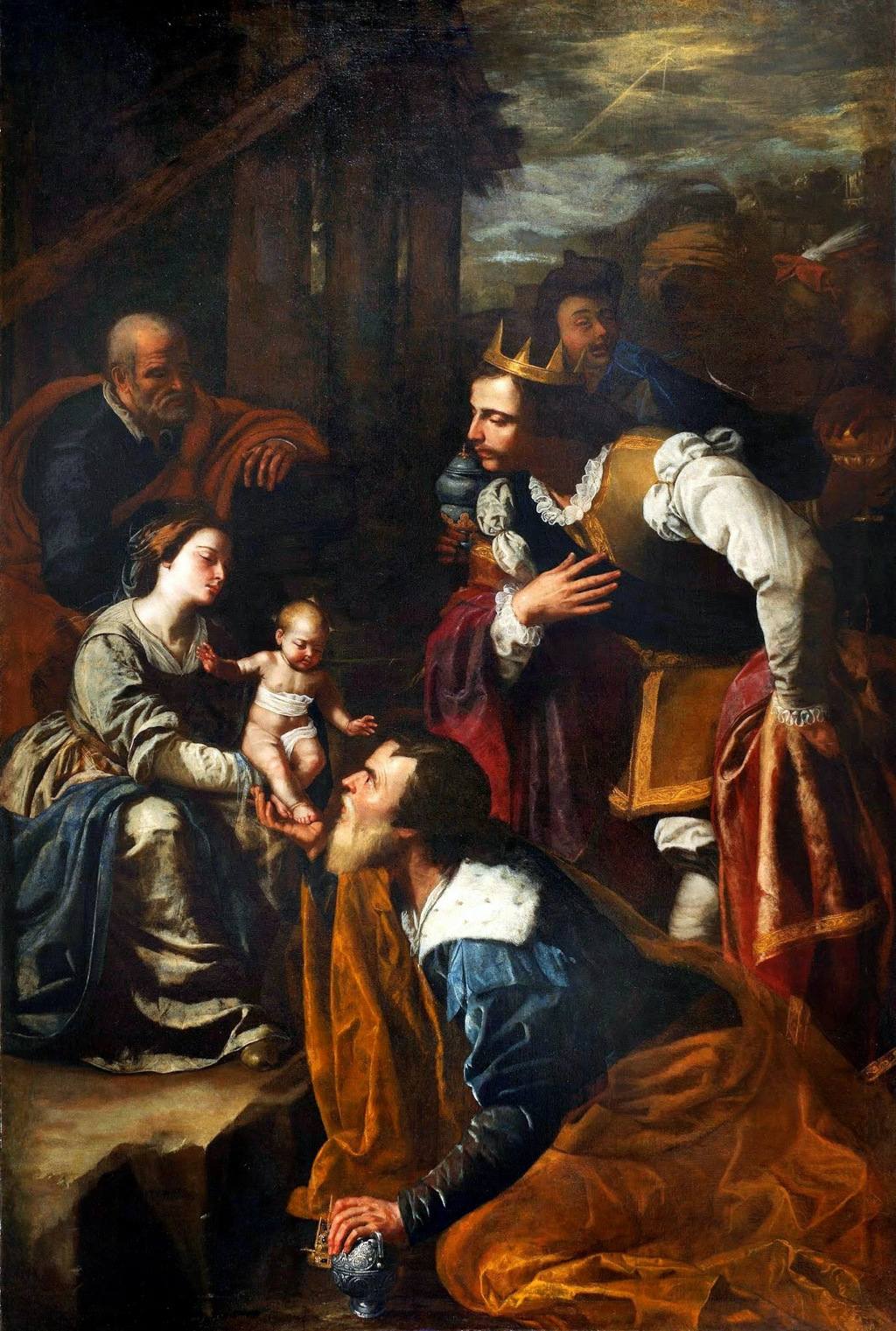 Adoration of the Magi
Adoration of the Magi



